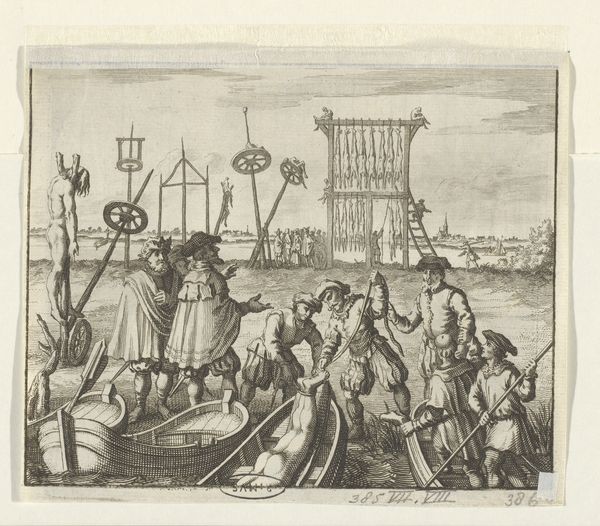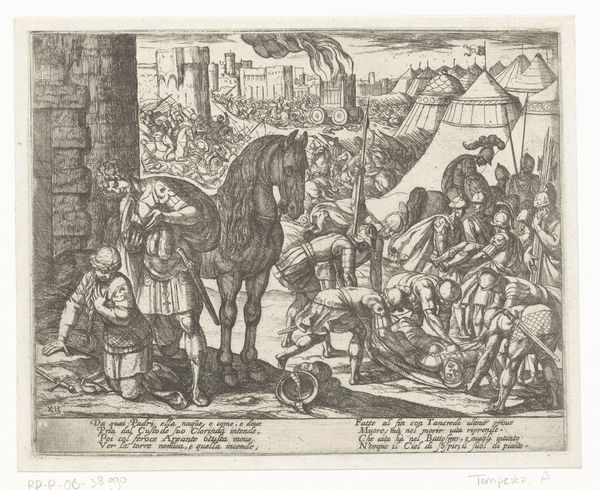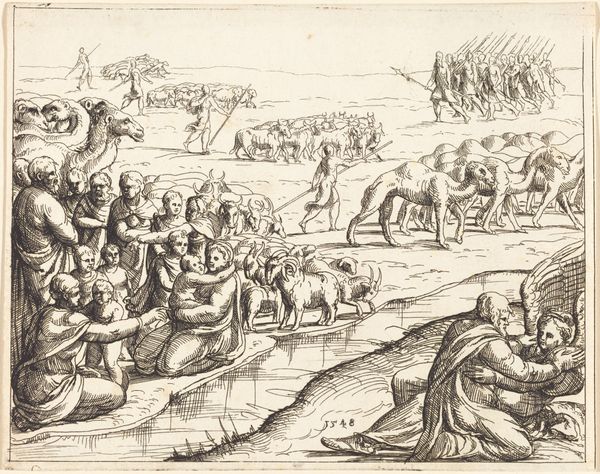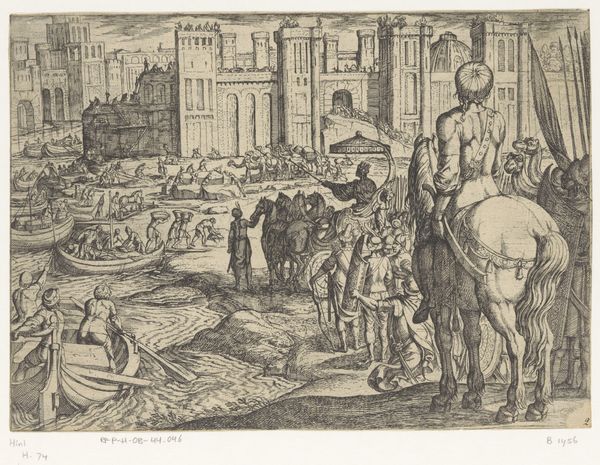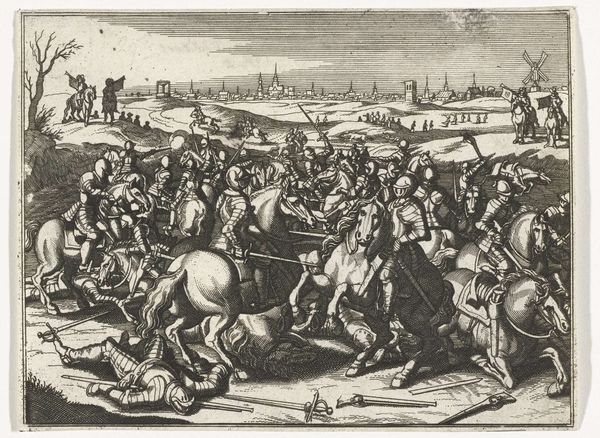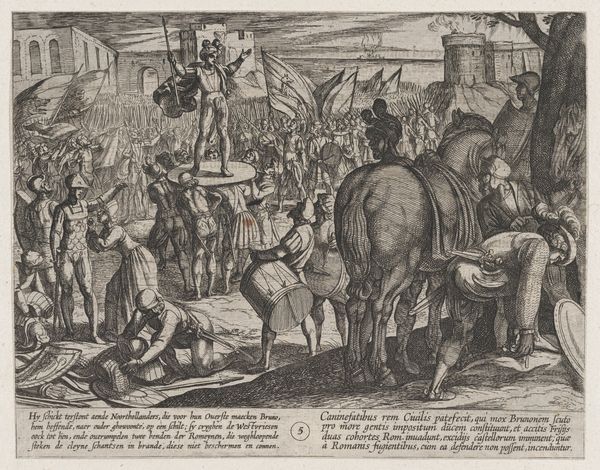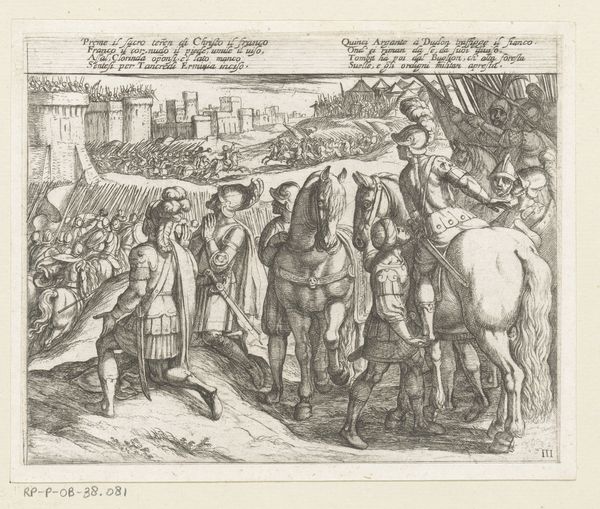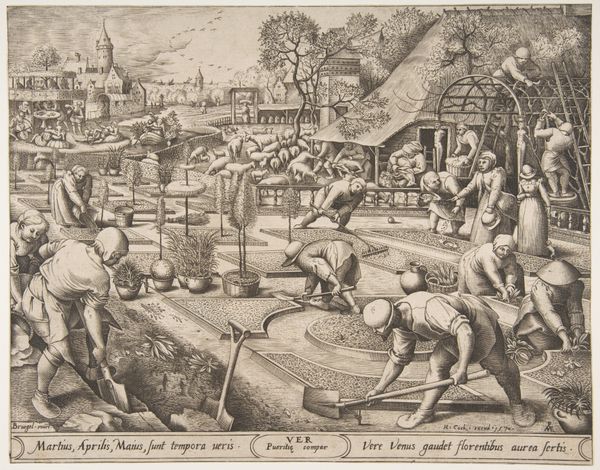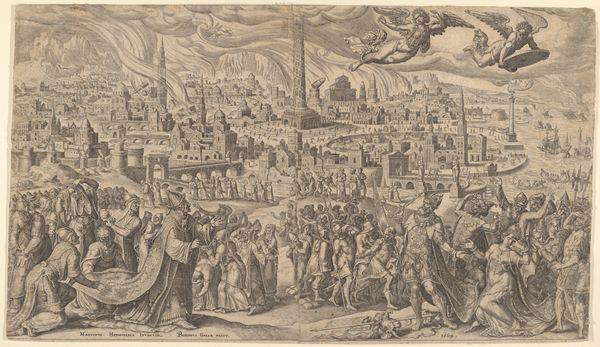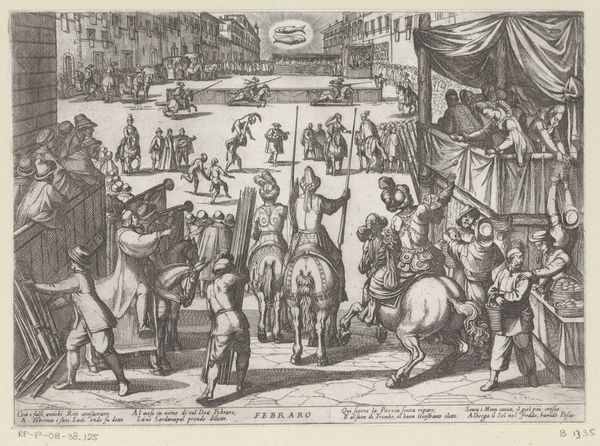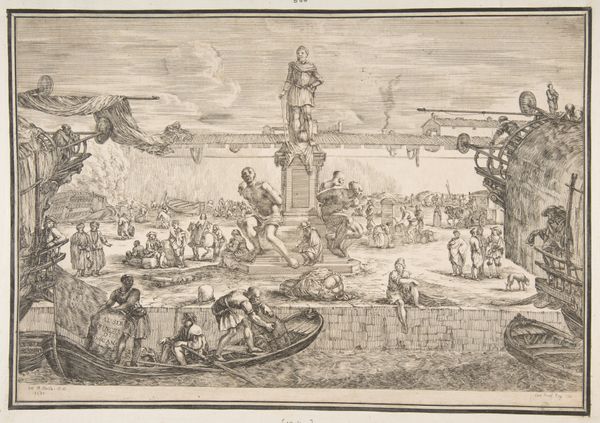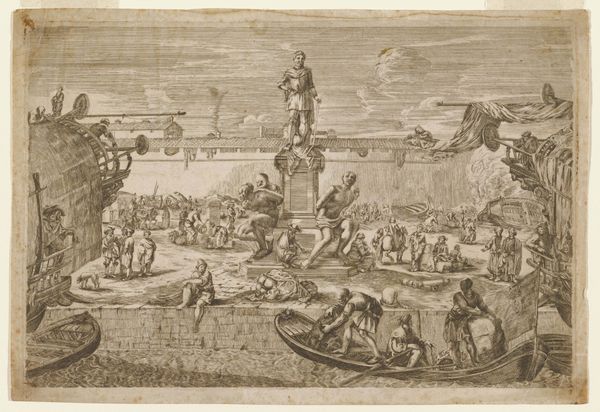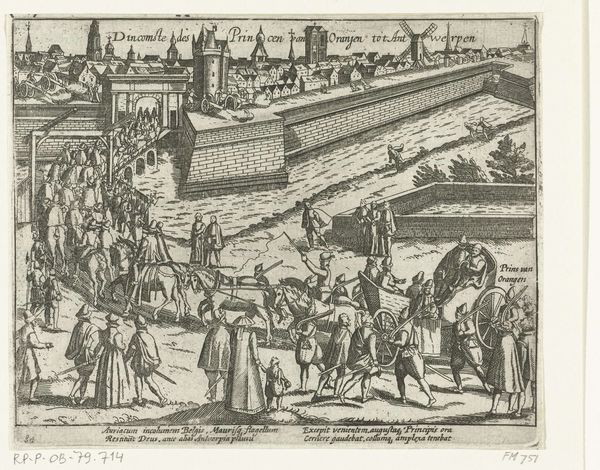
drawing, print, etching, ink, pen, engraving
#
drawing
#
baroque
# print
#
pen illustration
#
pen sketch
#
etching
#
landscape
#
figuration
#
ink
#
ancient-mediterranean
#
pen-ink sketch
#
pen
#
history-painting
#
italian-renaissance
#
engraving
Dimensions: height 205 mm, width 285 mm
Copyright: Rijks Museum: Open Domain
Curator: Antonio Tempesta created this print, an engraving, around 1608, titled “Kolos van Rhodos”, it resides in the Rijksmuseum collection. What’s your first impression? Editor: Disintegration, a monument literally broken down and being picked apart, even carried away piece by piece by camel trains. Yet, there's another, intact colossus standing proudly in the background! Quite a stark contrast. Curator: The depiction plays with history and legacy. The original Colossus of Rhodes, a massive bronze statue of the sun god Helios, was one of the Seven Wonders of the Ancient World, but it was destroyed by an earthquake in 226 BC. Tempesta illustrates not only its ruin but also its enduring symbolic power. Editor: Exactly. Despite its ruin, or perhaps because of it, the Colossus took on new layers of meaning. It’s more than just a depiction of a destroyed monument. Observe the figure standing behind it, with a torch. Could the intact statue, that rises further in the background represent enduring ambition and human desire for recognition? Curator: It's a compelling image of history being reshaped through cultural memory. Antonio Tempesta, trained in Rome, brings a grand, almost theatrical, sensibility to the subject, typical of the late Renaissance and early Baroque periods. He had to tailor it to his 17th century audience that saw Rome as the new power center, and classical ruins as symbolic trophies of the past. Editor: The detailed rendering of the broken statue, gives an intriguing visual message. The artist captures both the grandeur and the fragility of human achievement. Those bits are valuable materials now for somebody else, the defeated becoming sustenance. The symbolic torch continues its role of hope. Curator: Consider the political dimensions too. Depicting the decline of ancient empires served as a potent message. By showing us how the Colossus of Rhodes was brought down, Tempesta and his patrons warned of hubris and encouraged prudence. Editor: What lingers for me is how Tempesta uses this ancient ruin to discuss ambition, legacy and endurance and how he so successfully combines an accurate picture of past culture with timeless emotion. Curator: Agreed. This print serves as a powerful reminder of history’s cyclical nature and how monuments and narratives evolve through time.
Comments
No comments
Be the first to comment and join the conversation on the ultimate creative platform.
